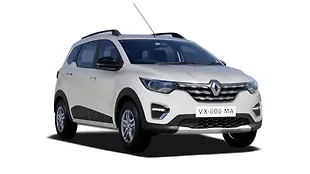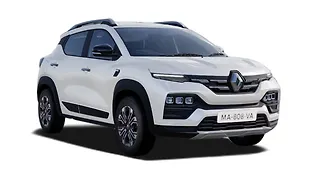What is it?

The new Dacia Duster that was globally unveiled recently is the third generation of the SUV. This will form the base for the Renault Duster that we expect to be launched by the carmaker in India. It looks modern and feature-packed — from the pictures at least. But will it be able to rekindle the excitement when it was first launched in India? From the looks of it, it seems quite like it. But again, to remind you, the Duster was a mid-sized five-seater SUV with oodles of space, outstanding ride quality, frugal diesel powertrain, and handsome looks. It only started to feel old due to the other modern SUVs in the segment that were equipped with more features, better interior, several drivetrain options, and a more appealing proposition. Has the new one managed to tick these boxes then? Let's delve deeper.

How is it on the outside?

A glance and you can say the chunky character of the Duster has mellowed down to a more squarish avatar. The flared wheel arches are gone and wear a slimmer look. However, the SUV still has that nice stance with a long and tall bonnet. The grille and headlamps form a part of a single unit which will house a Renault logo in the centre for the India-spec model. Although the design will remain identical to what we've seen in earlier models, the grille will be tweaked. The DRLs are a part of the headlamp cluster and the nose has been revamped with air dams. Then, the registration plate and fog lamps are integrated into one unit that extends to the lower skid plate section.

On the sides, the black applique on the fender, black surrounds, and the roof rails lend the car that outdoorsy appearance. Look closely and you'll realise the rear door handle has moved to the C-pillar. Also, the golden bronze ORVM cap might be a highlight across top-spec trims as this was spotted on test mules earlier as well. The boxy-looking rear gets an extended roof spoiler with a split design, which thankfully enhances the silhouette for an otherwise raked windshield. The Y-shaped LED taillamps, too, are refreshing and different from any of the versions we saw on the Duster's predecessors. However, the loading lip seems to be high due to the chunky bumper that gets a faux grey skid plate. Overall, as seen in the pictures, the new Duster looks impressive.

How is it on the inside?

The interior images suggest that the cabin has been revamped heavily and benefits from new elements. The latter includes a digital instrument cluster which is a big departure from the analogue ones we've seen earlier. Then, there's the huge eye-catching floating infotainment screen in the centre and atop the dashboard. There's even a phone holder next to it. Underneath are new air vents with golden inserts that make it look more funky than classy. Thankfully, there are physical buttons for various controls, including AC, with good storage and stowage options below them. The flat-bottom steering wheel looks modern and continues to get buttons for various controls. However, the stalks, grey dashboard, silver accents, and some other materials don't look quite upmarket. We hope they feel premium in person and are not of low quality. This is a differentiating factor for all the SUVs in this segment compared to the other entry-level SUVs of today. We hope Renault takes note of this and manages to equip the India-spec Duster with new tech including ADAS, dual-zone climate control, ventilated seats, panoramic sunroof, and more as seen in other mid-size SUVs on sale today. In terms of space, we think the new Duster that sits on the CMF-B platform will continue to boast segment-leading space and might be even better at it than its predecessor.

What is it powered by?

Apart from an outdated interior, another reason for the exit of the Duster from our market can be attributed to the lack of diesel engines with the facelifted versions. Now with the market maturing to SUVs powered by petrol engines, we hope the Duster will be accepted with its turbo-petrol options. It's too early to comment on what engine choices will be available in India, but Renault has options right from small turbo-petrols to pure petrols and from hybrids to even LPG powertrains abroad. Both the manual and automatic transmissions are expected to be made available upon launch. Whether the AWD versions will be considered is still an unanswered question for us. The 1.2-litre mild-hybrid could be considered, while the 1.6-litre strong-hybrid could be a good match for us along with an optional 4x4 drivetrain.

What about pricing and competition?
There was a time when the Renault Duster was the SUV to aspire for given its road presence, frugal engine, road manners, robust nature, and impressive ride quality. It was then overshadowed by the plenty of new SUV options with an array of features and a premium cabin feel. There are still many SUVs ruling the roost in this segment, like the Hyundai Creta, Kia Seltos, Maruti Suzuki Grand Vitara, and more. The new Duster will also have to face the barrage of sub-four metre SUV launches that happened recently and will continue to get updates till it is launched in India — maybe next year. It will not only be judged by what all it brings to the table but also by whether it brings in the value-for-money essence that still strikes the right chord for many buyers in India.




























